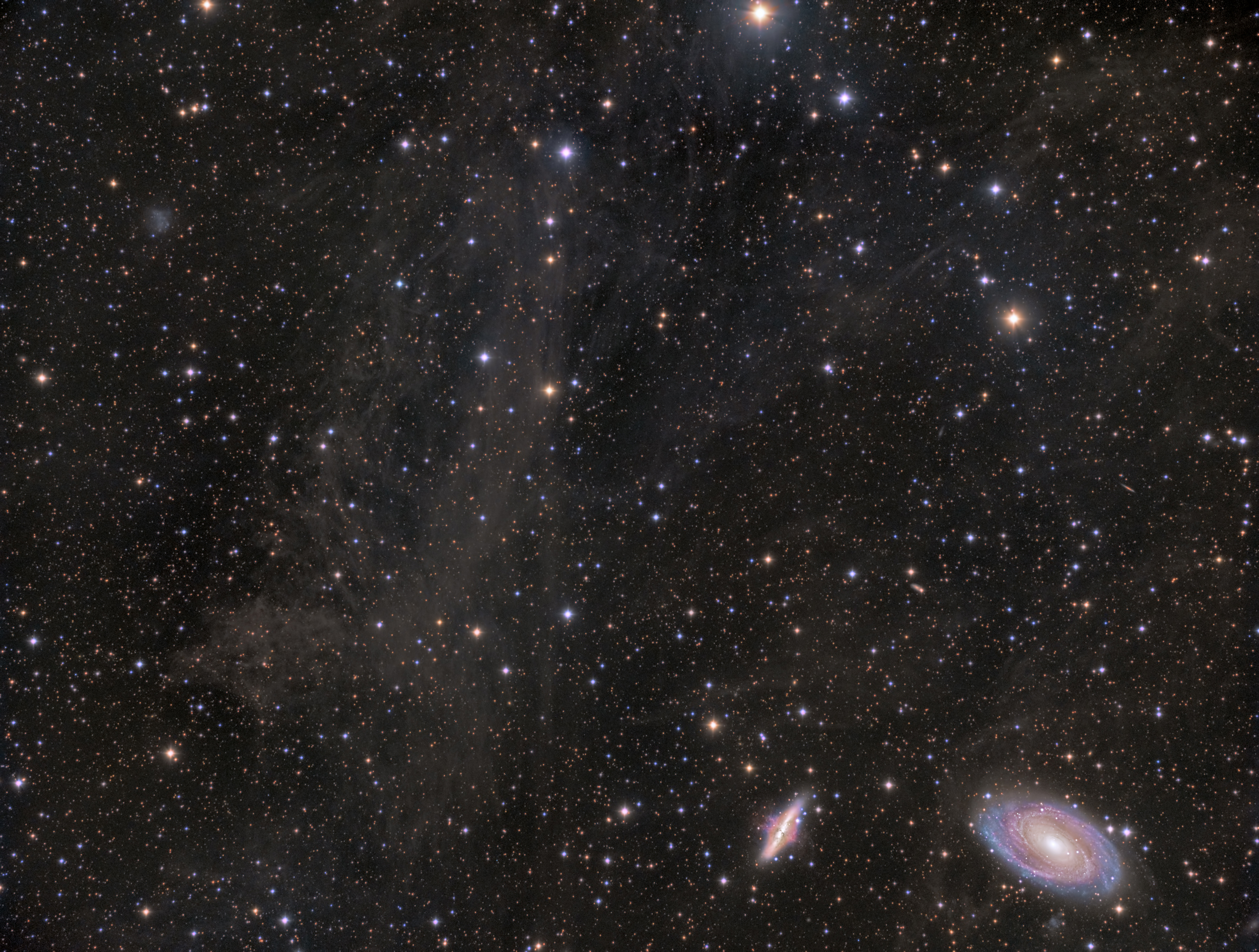• Your first link is a good example of how easy it is to get wrong / misleading information.johnnydeep wrote: ↑Sun Sep 19, 2021 4:19 pm Let me add one more highly questionable "source" for a 800+ Kly diameter. From http://www.poyntsource.com/Richard/ugc_2885.htm
This makes UGS 2885 appear comically large, and almost certainly incorrect since it makes the visible disk itself appear to be over 800 Kly in diameter! PS - that seemingly second galactic nucleus is in fact the very brightest foreground star in the APOD!Type = Sc Spiral Galaxy in Perseus
RA = 3h 53.5m 2.5s DEC = +35° 35' 18'' Distance ~ 96 Mpc Diameter ~ 250 kpc
m = +13.5 Apparent size = 5.5'
Mass = 2 x 1012 M¤ (Milky Way = 5 x 1011 M¤ ) Redshift = 5,800 km/sec, not unusual
The spiral galaxy UGC 2885 is the largest known spiral galaxy being some 250,000 parsecs in size (815,000 light years). It is some 10 times larger than the Milky Way ! The diagram below shows the comparison of UGC 2885's size vs. some other well known galaxies.
It's unclear where they got the source for the size, but one size is listed in this rather old - pre Hubble - reference from 1993.
"Canzian, B. Allen, R.J., Tilanus, R.P.J., 1993, Spiral Structure of the Giant Galaxy UGC 2885: Hά Kinematics, Astrophysical Journal, 406, p. 457."
Which I found at https://ui.adsabs.harvard.edu/abs/1993A ... C/abstract, or https://www.researchgate.net/publicatio ... kinematics, in which it states a Holmberg radius:
So, the Holmberg diameter would be 168 kpc, or 547 kly. Now, what's a Holmberg radius? From http://astro.vaporia.com/start/holmbergradius.htmlThe velocity field of the exceptionally large Sc galaxy UGC 2885 (Holmberg radius 84 h^-1^ kpc, where h = H_0_/100 km s^-1^ Mpc^-1^) has been mapped in Hα emission with the TAURUS I imaging Fabry-Perot spectrometer using the 2.5 m telescope at La Palma. The rotation curve extracted from the velocity field agrees with published data. Ripples in the velocity field around the minor axis indicate radial flows across the spiral arms. The radial flow speeds in the plane of the disk show 50-70 km s^-1^ peak-to-peak variation, suggesting that a strong density wave is present in the underlying stellar disk. Such high speeds may alternatively be a natural consequence of the open arm spiral pattern. In addition, strong density waves may naturally occur in large spiral galaxies or in spiral galaxies as massive as UGC 2885. (Its mass is over 10^12^ h^-1^ M_sun_ within the radius to which spiral arms reach, 52 h^-1^ kpc.) A strong density wave may also be necessary for the effective maintenance of the orderly, two-armed spiral pattern that is visible in the outer disk of UGC 2885, where the gas has made only about a dozen revolutions in a Hubble time.
The Holmberg radius of a galaxy (RH or RHO) is a measure of its radius (along the semi-major axis) based upon surface brightness. It is specifically the radius to the region of the galaxy's surface where the surface brightness has an apparent magnitude of 26.5 per square arcsecond through a B filter. In other words, that size area of that amount of surface brightness would provide light equivalent to a star of such magnitude. Since surface brightness generally does not decline with distance, the radius generally indicates the same portion of the galaxy, no matter how distant.
• A 10% difference between our visible image size calcs is certainly within reasonable error:
1) I chose 4.5' for the max angular size, and 2) I used the average SIMBAD distance =75Mpc ± ~10%
• The Holmberg radius does explain the 800kly diameter. It appears you chose Ho = 100 km∙[sec∙Mpc]-1? For this work, the average Hubble constant was close to 68 km∙[sec∙Mpc]-1, yielding a Holmberg diameter = 805 kly.
The Holmberg radius at least defines a standard dimension. However, I'd expect it could be problematic in regions of the sky where scattered light from nearby nebula or the MW IFN would bias the result to larger sizes, e.g. the average IFN brightness is near the Holmberg criteria (e.g. M81 & M82). Maybe this bias would not be a problem for most galaxies.
I've not seen reference to the Holmberg radius before, possibly because common galaxy images don't go that faint without overexposure of the main body. The M51 example would be a great baseline comparison to an equivalently imaged UGC 2885.
DEEP IMAGING OF M51: A NEW VIEW OF THE WHIRLPOOL’S EXTENDED TIDAL DEBRIS (2018)
→ So, I'd be happier if the APOD description had simply noted the 800-kly dimension as the Holmberg radius (also linked).
However, I'd guess defining the Holmberg radius for the MW would be a bigger challenge and have a large(r) uncertainty.

